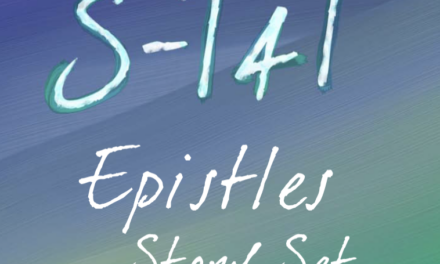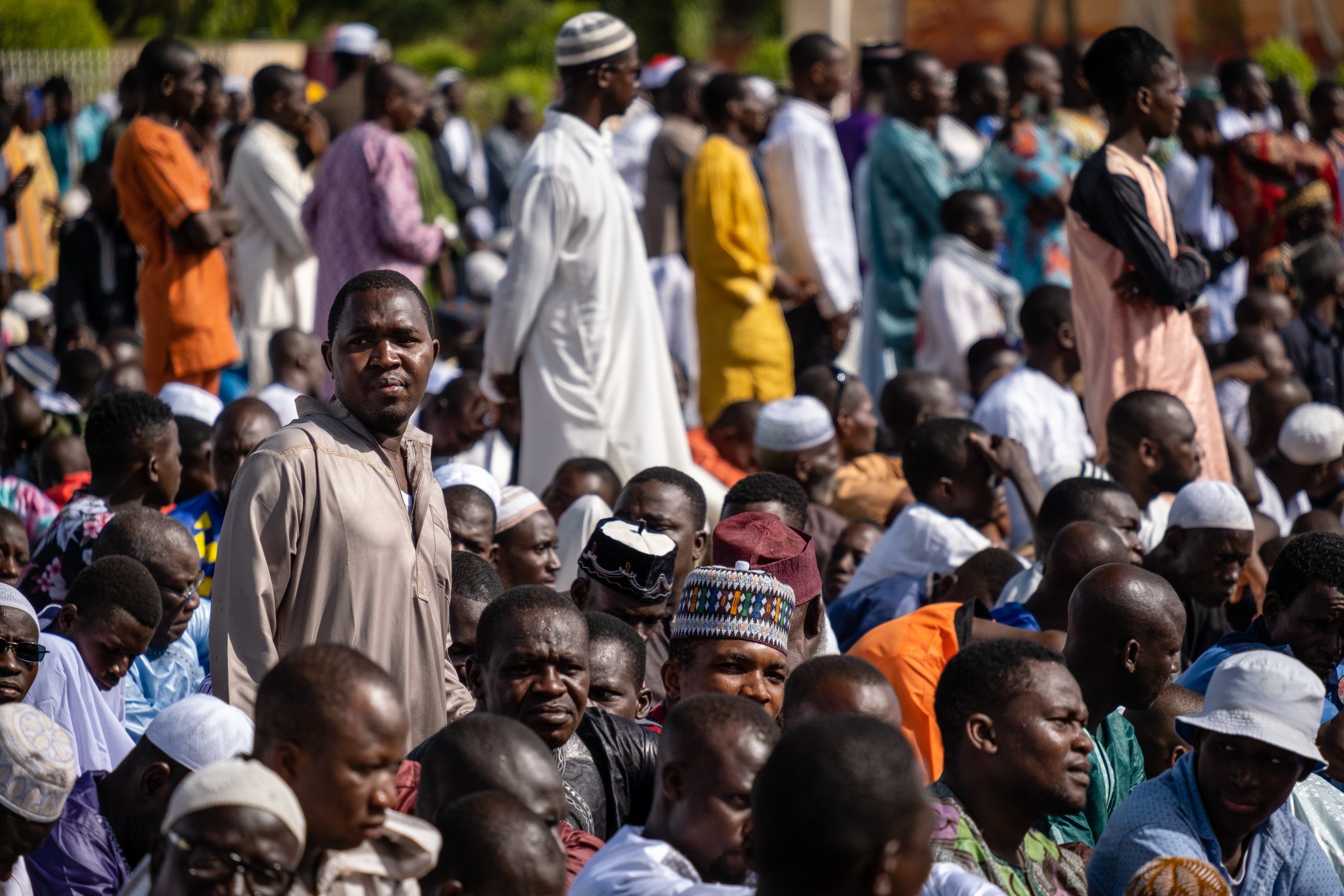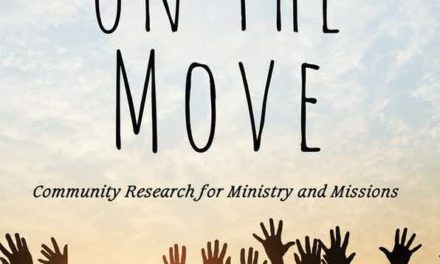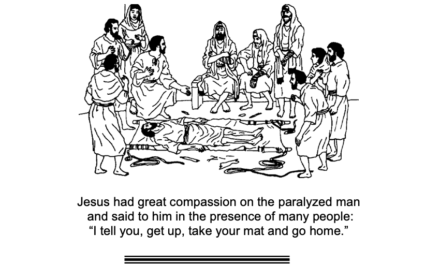The StoryTogether process is a multi-lingual, multi-crafter, and multi-source method for multiplying followers of Jesus, oral Bible stories, and churches. The process is not about just producing high-quality Bible stories, or even audio recordings of Bible stories, although it does both. These stories are a means to an end. The end is to see people have an opportunity come to faith in Christ and live the abundant life. That happens as they hear the biblical stories, believe, grow in their knowledge and obedience to him, and fellowship with others in healthy churches that start other churches.
What is the StoryTogether process?
The StoryTogether process is a multi-lingual, multi-crafter, and multi-source method for multiplying followers of Jesus, oral Bible stories, and churches.
- By “multi-lingual,” we mean it is a collaborative process in which speakers of different languages work with each other to put Bible stories into their various languages.
- By “multi-crafter,” we mean that the stories are crafted by teams of people, not by an individual working alone.
- By “multi-source,” we refer to the fact that the teams of story crafters develop an intimate knowledge of the Bible stories through multiple Scripture resources rather than simply working from a single source of the biblical story, such as an existing printed story in English, Spanish, or French.
The process is not about just producing high-quality Bible stories, or even audio recordings of Bible stories, although it does both. These stories are a means to an end. The end is to see people have an opportunity come to faith in Christ and live the abundant life. That happens as they hear the biblical stories, believe, grow in their knowledge and obedience to him, and fellowship with others in healthy churches that start other churches.
Is this process actually Bible translation?
No, it isn’t, but it can be adapted for translating the Bible. The StoryTogether process includes many activities that are part of Bible translation.
- It involves reading and/or hearing stories from the Bible in one language and telling them in another language.
- It gives careful attention to key terms in the biblical passage.
- It draws on suggestions that respected Bible translation organizations have developed for dealing with the various linguistic challenges that arise in putting biblical content into the languages of the world.
- It utilizes techniques for working with multiple languages in a single workshop that The Seed Company, a Bible translation organization, developed for its translation projects.
- It does community testing of the stories to make sure that they are effective.
- It utilizes the process of backtranslation to evaluate and, if necessary, correct the biblical stories that teams produce.
- It requires that someone with theological training review the biblical accuracy of the stories that teams produce.
- It produces high-quality audio recordings of the biblical stories that can be used in a variety of ways.
- It is certainly possible to use the StoryTogether process with somewhat different guidelines that would result in it being a component of a Bible translation project. IMB and The Seed Company have partnered in projects designed to produce both audio recordings of crafted oral Bible stories by using this process which then led into a written translation project. The Seed Company co-sponsors other projects that use their process from which the StoryTogether process was adapted, for producing oral Bible stories and for training Bible storytellers as part of a larger Bible translation project. In those instances the correct answer would be, “Yes, this is a helpful component to a Bible translation process.”
But as IMB more often practices it, we do not think of the StoryTogether process as being Bible translation per se. We think of the stories that result from this process as being a form of biblical proclamation, not Bible translation. That is, they should be evaluated by the standards one applies to preaching or teaching. We expect the stories to be highly accurate (far closer to the words of Scripture than any sermon); in fact, we have a step in which we verify that every assertion in the biblical story is justified by Scripture. But the stories are crafted with the experience of storytelling in mind, not with a focus on their being a translation.
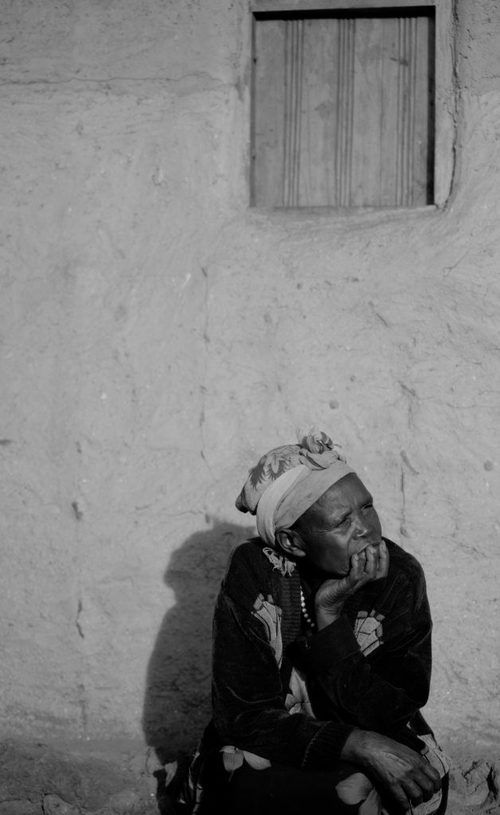
As local people put the Bible story into their own storytelling style, they shape the story in ways that may not follow translation standards, especially the standards of those who prefer a formal equivalence approach to Bible translation. (Formal equivalence seeks to preserve the lexical details and grammatical structure of the original language.) These departures from strict standards of Bible translation, however, may be part of telling the story effectively in their cultural storytelling style.
StoryTogether teams may re-sequence the events of the biblical story to follow patterns of development that their culture uses when telling a story. In a Kenyan culture, the storyteller begins by summarizing the story in one sentence. For example, “This is the story of how David defeated the giant Goliath, cut off his head, and delivered Israel from the Philistines.” In that culture they end their stories with the same one-sentence summary they began with. This is not how the Bible usually tells its stories, but it is how people in certain cultures expect a good story to be told.
StoryTogether teams may use repetition of certain key sentences or key phrases, which makes for good storytelling in their culture, but which is not, strictly speaking, the wording of the Bible itself. The Bible may say the phrase or sentence once, but in their story the team may use that same phrase repeatedly. This is especially common in cultures where storytelling involves a mix of speaking and singing.
Storytellers sometimes convert indirect speech into direct speech in order to make a story more vivid and emotionally engaging. For example, in the story of the Gerasene demoniac, Mark says, “As he was getting into the boat, the man who had been possessed with demons begged him that he might be with him” (Mk. 5:19 ESV). StoryTogether teams have frequently said in their stories, “As Jesus was getting into the boat, the man who had been possessed with demons begged Jesus: ‘Jesus, please, please let me go with you!’” Note also how for clarity the storytellers use “Jesus” instead of the pronouns “he” and “him” and use the repeated “please” to add bring out the pleading quality of “begged.”
At times, good storytelling requires that the storyteller make explicit in the crafted story information that is only implicit in the biblical story. For example, Jesus’ parable of the Good Samaritan does not explain what a Samaritan was. He did not need to explain that; his audience knew about Samaritans and the animosity between them and the Jews. When people do not have a printed Bible, with its marginal notes and footnotes to clarify this kind of information, then the storyteller may make this information available to his listener by making the implicit information explicit in the story. So, a storyteller might say, “Along came a despised Samaritan,” where the adjective “despised” gives today’s listeners a basic understanding that Jesus’ listeners had on that occasion. Whenever feasible, we prefer to give background information and explanatory information before we tell the story itself, rather than include it within the story. However we sometimes make the implicit information explicit within the crafted biblical story itself.
In addition, in some StoryTogether projects, the stories may be based on one passage of Scripture, but may include selected details from other passages of Scripture that discuss the same event. For example, no biblical author includes more than three of Jesus’ seven sayings from the cross. But a storyteller might want to include all seven when she tells the story of Jesus’ crucifixion. Drawing from multiple passages can make the told biblical story more factually complete, easier to understand, or more meaningful, but the resulting crafted story is not Bible translation per se. Every assertion in the crafted story will be biblically anchored, but the crafted story may draw from more than one biblical passage. Sponsors of a StoryTogether project could choose not to take this step; they may have good reasons to insist that each crafted story be based on a single passage of Scripture. This is acceptable in a StoryTogether project whenever the local situation makes this seem advisable.
Who does the story crafting?
In a StoryTogether project, the primary story crafters are native speakers of that language. Cultural outsiders may provide training to them, coach them as they do it, and help with the evaluation, especially the biblical and theological evaluation of stories. But the chief responsibility lies on the shoulders of the cultural insiders who speak that language as their mother tongue.
This approach improves the quality of the resulting stories and the pace at which they can be produced because it relies on people who already know intimately their own language and their own storytelling customs. It has been proven consistently in the realm of Bible translation that mother tongue speakers can be excellent translators.
How much training does it take to be a facilitator of a StoryTogether project?
Christian workers who have experience with Bible storying, theological training and good language skills can pick up the StoryTogether process pretty quickly. If they observe and assist in a two-week StoryTogether workshop, that will prepare them to co-lead a StoryTogether workshop. But even experienced practitioners have found it helpful to attend three StoryTogether workshops before they try to facilitate one independently.
We want trainees to observe at first, then assist the facilitators in tasks of increasing complexity. Later they can lead a workshop with the supportive coaching of an experienced facilitator, and then finally facilitate the process independently once they and their coach are convinced that they are ready to do so. Depending on people’s background, knowledge, skills, and confidence, they will move at different speeds toward being ready to facilitate the process independently.
Do the people in the StoryTogether project do anything with the stories besides create them and record them?
StoryTogether participants are strongly encouraged to share the stories with family and friends and others in their community.
Wherever circumstances permit, they go into the community in the late afternoon and evening during the workshop to share the stories with people who speak their language. In this way they combine community testing with outreach efforts. The facilitators help them realize that the most natural testing of all is the testing that comes in the course of sharing the stories with those who have never heard the gospel. A complete StoryTogether workshop includes vision casting for sharing the stories, seeing people come to faith, and the new believers likewise learning and sharing the stories with others. The StoryTogether workshop, however, does not teach a specific evangelistic or discipleship method. If the existing strategy is already oriented to a particular evangelistic presentation it can be incorporated into the StoryTogether workshop, as long as it is compatible with the oral, narrative thrust of the workshop.
Do the stories that these teams create follow the Scripture exactly?
The StoryTogether process makes sure that every assertion in the biblical stories that we produce is substantiated by Scripture. We do not allow the storyteller to embellish the story with his or her own imagination. But the stories do not necessarily follow the wording of Scripture exactly. In many situations where we have StoryTogether projects, this is impossible anyway, because those languages do not have a written Scripture.
In situations where there is a Bible translation, the StoryTogether teams will use the written translation as a reference, but they are not seeking simply to produce an audio version of the printed Scripture. A told story is often different from a written story, so the told stories that the StoryTogether process produces may be different from the wording of Scripture at some points, even though the told stories may quote Scripture verbatim at other points in the story. See the answer to the question, “Is this process actually Bible translation?”
How many stories can you do in a single workshop?
This varies considerably, depending on the experience of the story crafting team and the length of the workshop. In initial story crafting workshops, when the teams are learning the StoryTogether process, we have seen teams finish from 3 to 5 good-quality Bible stories in 10 workshop days. Experienced teams working intensively and efficiently have produced 5-8 high-quality stories and audio recordings in a two-week workshop.
In some cases the story crafters were unfamiliar with the Bible, so they needed more help with understanding the biblical stories before they could begin crafting them. Their productivity was lower as a result.
How many stories could a team produced in a year’s time?
Teams who are working at story crafting consistently can produce an average of about one well-crafted, community-checked, backtranslated, theologically-reviewed and audio-recorded story per week. But if the team is not able to work at the crafting task consistently, the pace can be much slower.
The pace at which teams can produce stories is also affected by the education and ability of the team members and availability of Scripture in other languages that they understand well. In some cases the pace is also affected by social disruption, illness, changes in the composition of the team, and such matters. As in all endeavors, the motivation level and work ethic of the team members are also a factor. Orality Strategies
Where has this approach been used previously?
Among other places, it has been used in Papua New Guinea, Madagascar, West Africa, South Africa, Peru, and in multiple locations in South Asia and East Asia. Can you help us add another country to the list?
I would like to have a StoryTogether project for the people with whom I work. How I get started?
Planning for a StoryTogether project begins with an individual Christian, a church, a mission organization, or another entity that sees the need for and value of this project and who is willing to take the lead in organizing it. If the dream begins with an individual, we encourage the individual to seek out partners who share the vision and who will share responsibility for the StoryTogether project. This collection of interested individuals and entities are what we refer to as the “project sponsors” of the StoryTogether project.
The project sponsors pray for the project, cast a vision for it, enlist the necessary people to be involved, arrange funding and other resources, and connect the StoryTogether project to other ministry that is already underway or that is planned. Frequently the project sponsors are strategists or team leaders from mission organizations who see the need for Bible stories to strengthen their existing work with a people group or to enable them to begin outreach with a Bibleless language community. Potential project sponsors can write StoryTogether@imb.org for more information.
Who manages these StoryTogether projects?
Each StoryTogether project needs a project manager. The project manager coordinates planning within an entity or among several entities that sponsor a StoryTogether project.
The project manager has many important responsibilities:
- The project manager coordinates details such as schedule, location and logistics for the workshops, housing and meals, and maintains regular communication with the local partners.
- The project manager works with stakeholders in the selection of the languages that will be represented at the workshop and the individuals who will make up the story crafting teams.
- The project manager coordinates the choice of which stories to craft with the project sponsors and the workshop facilitator.
- The project manager is frequently asked to enlist several local non-Christians as subjects with whom the workshop facilitator can demonstrate how to test a story in community or how to elicit a backtranslation.
The project manager should be selected by the church, ministry entity, or other partners who are sponsoring the project. The project manager will need good interpersonal and organizational skills and a good grasp of the process and outcomes of a StoryTogether project. In some cases the project manager will be responsible for following up with the individual teams after each workshop to encourage them to continue work on their stories between workshops.
The project manager also enlists a workshop facilitator, or preferably, two or more workshop facilitators. The workshop facilitator is responsible for leading the workshop, coaching the story crafting, and supervising the checking and revision process. The project manager and workshop facilitator work together carefully to make sure that the meeting space is adequate for the needs and that the appropriate materials, teaching aids, and so forth are ready on site by the time the workshop begins. It is preferable for the workshop facilitator to provide the ongoing encouragement and guidance to the individual teams after the first workshop and throughout the duration of the project. But if the workshop facilitator is not able to do that, then the project manager or some other person needs to be available to interact consistently with the story crafting teams between workshops. This ongoing (often weekly) contact is essential for the teams’ effective functioning and productivity. This is a critical part of the planning for a StoryTogether project; the project should not begin until it is clear who has this follow-up responsibility.
Occasionally in smaller StoryTogether projects (ones that include only two or three language groups), the workshop facilitator may also take on the duties of a project manager. This is not recommended, however. In most cases the project manager should be someone other than the workshop facilitator.
In some StoryTogether projects, the workshop facilitator will also provide the theological review for the stories that are crafted. Some sponsoring entities will decide, however, that another person should carry out the theological review of the stories. This third-party review is advisable, lending added credibility to the undertaking. The person doing it must understand the goals and values of the StoryTogether process. As StoryTogether sponsors are discussing a potential project, they should determine whether third-party theological review is required or merely desirable. For ST projects aiming at Bible translation, this third-party review is essential.
Could this process be used in North America?
Yes. This process can be used anywhere. It offers a useful way of getting Bible stories into languages of minority groups in the United States and Canada. Churches and other ministries reaching out to immigrants may find this a good process for helping immigrants have oral Bible stories in the language of their heart.
Are there trained consultants who check the quality of work in the StoryTogether projects?
The StoryTogether process always includes theological review of the stories, but it does not require that this be a certified consultant of the sort that is common in written Bible translation projects. Sponsors of individual StoryTogether projects may choose to enlist someone in this role, especially if the stories are being crafted in a language in which there is no acceptable written translation of the Bible. But especially when an acceptable written translation of the Bible does exist, a theologically informed person can function in the theological review role. When the StoryTogether process is used for actual Bible translation, then checking by a qualified translation consultant is essential.
Does a StoryTogether project violate guidelines against creating financial dependency?
If handled well, it shouldn’t. Because a StoryTogether project has the potential of providing accurate, appealing biblical stories to everyone who speaks that language, it is justified to spend church or mission funding on it. Historically speaking, very few language groups have translated the Bible themselves initially. That has almost always been reliant on outside funding. A similar situation exists with regard to putting Bible stories in languages that do not have them. Only a few people would receive financial support in a StoryTogether project; this is different from paying outside funds to every pastor or evangelist, which does create dependency.
What sets StoryTogether apart from other processes for putting Bible stories into other languages?
The StoryTogether process is more systematic and rigorous than most instances of Bible storying, but it is more flexible, less tedious, and much faster than Bible translation processes.
The StoryTogether process includes careful community testing of the stories, followed by revisions, more testing, and so on until the story is of acceptable quality. Community testing involves telling or playing recordings of the crafted stories for ordinary people in the community and dialoging with them about the stories to see if they understood the meaning and if they can repeat them. StoryTogether projects also include backtranslation, which is “the process of translating a document that has already been translated into a foreign language back to the original language–preferably by an independent translator.” In ST projects we obtain an oral backtranslation of oral stories into a language that a theological reviewer can use to evaluate the stories.
Most of the facilitators in the StoryTogether pilot projects were experienced with Chronological Bible Storying (CBS). They found the community testing process to be an essential step in improving the quality of the stories. After using the StoryTogether process, each of them said in essence, “Knowing what I now know about community testing–and having caught the many mistakes that I didn’t realize were there—I would never want to develop a set of Bible stories without community testing.”
The StoryTogether process is also distinctive in that it is capable of working with multiple languages and dialects simultaneously in a single workshop. It is possible for a skilled individual facilitator to work with as many as four different languages in a single workshop. This multiplies the impact of the facilitator’s expertise. A skilled pair of facilitators could conceivably facilitate projects in two dozen languages in a given year. Their expertise can affect many more languages than if they were to become experts in just one language and be the primary translators themselves.
The StoryTogether process is designed not to require literacy on the part of the story crafting team. This means that the process can go forward immediately instead of having to wait until team members acquire the levels of literacy necessary in other approaches. By virtue of being entirely oral, this story crafting process can be done in languages that do not have an alphabet and writing system.
The StoryTogether process was developed so as not to require a trained Bible translator to facilitate it or a professional linguist to serve as a consultant to it. There are too few of these valuable resource persons to meet the huge need. So this team-of-teams process utilizes mother tongue speakers’ expertise with their own language—and group interaction—to refine and improve the stories. Biblically knowledgeable facilitators and theological reviewers help teams of mother tongue story crafters to make sure they’ve achieved acceptable standards of quality in the stories they produce. (If trained Bible translators and professional linguists are available, they can be involved in the StoryTogether process to improve the stories even further.)
The StoryTogether process is not about simply producing audio Bible stories. It is focused on helping people come to faith in Christ, grow as his disciples, function as part of a healthy church, and reproduce their faith in the lives of other people.
Is a StoryTogether project simply about making recordings of Bible stories?
No, the process has several important goals. Making recordings of Bible stories is only one of them, and it is not the ultimate goal. The ultimate goal of a StoryTogether project is to equip Christians to tell biblical stories in their language and storytelling style in an accurate and interesting way within their community, lead people to faith in Christ, and disciple them into healthy reproducing churches. Developing the stories is a critically important means to this end.
Simply creating the stories and recordings of them is not the ultimate aim of a StoryTogether project. However, in some cases where there is already an effective evangelism, discipleship, and church planting strategy in place, the StoryTogether process can be used to generate Bible stories to be used in the existing outreach. The emphasis in the workshop on telling stories in ministry may be less because the participants are already actively doing it.
How much does it cost to do a StoryTogether process?
The chief costs of a StoryTogether process are travel, housing, and meals for the workshops. Those vary from project to project. ST projects require a pair of audio recorders. Good quality digital recorders can be purchased for under $100 USD per language team.
The StoryTogether process has been developed with the hope that it can be inexpensive, so that groups of local believers could continue crafting stories in their language without needing large sums of money. These projects do not require expensive equipment. Teams need some kind of audio recording device, but we have found in our workshops outside the United States that some of our workshop participants already had cell phones capable of making audio recordings. Digital audio recorders can be purchased inexpensively, but buying the cheapest available recorders often leads to trouble. We have had good success with Olympus digital recorders costing about $40-50 USD each.
The chief costs of a StoryTogether project are related to travel to attend workshops and the cost of meals and housing during the workshops. In some cases the story crafters’ churches have provided financial support. The other primary cost of a StoryTogether project is the financial support that may be necessary if people are to work at the story crafting consistently. When sponsors want to produce stories quickly, then they frequently must help the story crafters to work at it consistently. If not, the progress is understandably slower. How much this costs depends on the local cost of living.
If I’m trying to put together a team for a StoryTogether project, what characteristics should I look for in people on the team?
An ideal team size is 3 to 5 people. Among those 3 to 5 we would like to have both men and women. It is helpful to have at least one person who is biblically knowledgeable and theologically informed. It is possible to have a successful project without such a person, however, especially in situations where there are few or no Christians. Every member of a StoryTogether team should be someone who enjoys experimenting with language and is sensitive to how his or her language works.
People who enjoy wordplay, make puns, and like to compare their language to other languages are often good candidates for a StoryTogether team. It is helpful to have team members who are representative of the intended audience for the stories. For example, a story crafting team made up of highly educated pastors and Bible teachers is less likely to come out with stories that appeal to the common person. Pastors tend to use technical language and biblical terminology that doesn’t communicate as well. An uneducated farmer or grandmother who is a skilled storyteller is often an excellent contributor to the StoryTogether team.
What stories do you develop in a StoryTogether project?
In the first workshop or two, the primary focus is on training the local teams in the StoryTogether process. They need opportunity to develop their skills and their confidence. So we begin with shorter and simpler stories. We often use a series of stories taken from Mark 4-5 to teach the StoryTogether process. These also happen to be stories that are useful in ministry. Once the teams have been trained in the StoryTogether process and have successfully worked through several stories of increasing difficulty, then the team members and other stakeholders can decide what additional biblical stories they want to develop.
In some StoryTogether projects, project sponsors agree in advance on what stories will be developed. They have need of specific stories for their various teaching aims, so this is a point of discussion in the early phases of planning.
What is community testing?
Community testing involves taking the biblical stories that the small group has crafted and presenting them to people who speak the language in which the story has been prepared. Teams dialog with ordinary speakers of the language to evaluate whether the stories meet our standards for accuracy, naturalness, understandability, and oral repeatability.
Sometimes this testing is done using a live telling of the story; in other situations the testing is done using the audio recording of the story. There are advantages and disadvantages to each approach. The participants ask those who have heard the story to answer questions about it and to retell it. The participants seek permission to record the answers and the effort to retell it. Later the teams use those recordings to evaluate how well the persons in the community understood the story and how repeatable their story seems to be. Participants also learn to ask open-ended questions as a way of discerning the comprehension of the story by members of the community. All this information guides the StoryTogether team as they revise the story to ensure that is biblically accurate, natural, understandable, and repeatable.
Does anyone check the stories for accuracy?
Yes, every story is checked for accuracy. Decisions about who does the checking depend on the skills and availability of the project facilitator, the number of languages represented in the project, and the aims of the project.
When the members of a language team believe that they have their story in finished form, they provide a copy to the workshop facilitator, who works with them to verify that every assertion in the story has a legitimate biblical basis.
The facilitator works with them to see if anything essential to the story has been left out. The facilitator also reviews with them the results of the community testing to determine that the listeners understood the story accurately. If members of the community repeatedly misunderstood the story, then the team works together to determine if there is some factor in the story that is contributing to misunderstanding. They work until they believe they have created a story that has the best possible chance of communicating the biblical message accurately. If the story is being crafted in a language which has a written Scripture, then of course the told version is compared to the written translation and adjusted as needed. If the stories are being crafted as part of a Bible translation project, then they are checked according to accepted translation criteria.
How accurate do the stories have to be to be approved?
Stories prepared in a translation-oriented project meet the standards of Bible translation. Stories prepared for use as proclamation, that is, in evangelism, discipleship, leadership training, and the like, may not include embellishment or speculation. Every assertion in a crafted biblical story needs to be supported in Scripture.
Careful exegesis of Scripture underlies these decisions about what the Bible teaches and what the story can and must say. The process of verifying biblical accuracy is called “anchoring.” If there is a written form of the language, the simplest way to do the anchoring process is to write or type a transcript of the oral story and then go over it assertion by assertion, penciling in Scripture references for each assertion. If the stories are in an unwritten language, we usually make a written transcript of the oral back-translation and use that to do the anchoring. Theologically knowledgeable people are invited to review the stories for biblical and theological content. If they find problems they notify the project manager, who works with the team to address the problems.
What are the primary challenges you have seen thus far in the StoryTogether projects?
The most frequent challenges have to do with the fact that this is a team-of-teams approach. Simply getting people together to work collaboratively is a challenge for a variety of reasons.
- In some cases it is a security risk to get that many people together in one place.
- Sometimes the various small teams are reluctant to work with each other because their different communities have a history of conflict or because of lack of trust toward strangers.
- Some story crafters cannot be off work for one or two weeks.
- Rural people sometimes are not accustomed to travel away from home. Taking them to meet with other teams is disruptive to them and their family.
- Coordinating schedules can sometimes be difficult. Agreeing on the set of stories that all the groups are going to work on takes some negotiating.
- The project managers for the StoryTogether pilot projects have found various ways to address these difficulties.
- In some cases local churches have raised funds to cover the travel, housing, and meal expenses during the workshops.
- In other cases project sponsors have provided funds to make up the loss of income during the time the participants took off work to attend the workshop.
- In still other projects, the sponsors have employed people to do the story crafting tasks (in addition to other conventional translation tasks).
- Another solution is to work with only two or three language groups, rather than having a larger project with half a dozen or more language groups involved. In projects with only two or three language groups, there are trade-offs. They give up some interaction in order to be able to meet closer to where the two or three language groups live and to keep the size of their meeting small enough not to draw unwanted attention.
In some of the StoryTogether projects, it has not been a problem for the teams to get together for two weeks every three months to compare progress on the stories they’ve worked on independently during the previous three months. These are places where churches are more numerous, the story crafting participants are full-time church or denominational workers or their spouses, and there are no security issues.
In one StoryTogether project, after the initial two-week training workshop, members of the small teams have not gotten together; instead, the workshop facilitator has transmitted the audio recordings from one small group to the others. So the three small groups have given feedback to each other based on hearing the audio recordings. This is not as good as seeing the stories told live and responding to the whole event of storytelling, but it does ensure that each group does get feedback from other groups. In that particular project, the project facilitator meets with one small crafting group every Tuesday, meets with another small crafting group every Wednesday, and meets with a third small crafting group one weekend a month in the distant rural area where they live.
Where does funding come from for projects like this?
Funding comes from a variety of sources. Many projects are the result of a partnership between local Christians and churches and missionary organizations of various kinds.
Christian foundations have funded some projects, as have individual donors, although in these cases they have consistently partnered with others who also bring resources to the project. Sometimes the contributions from partners can be non-cash contributions that are valuable. Individual congregations may allow use of their facilities and provide meals to the teams as they craft the stories. Churches may free up some of their capable leaders to be involved in the project while continuing their financial support to them.
How can I get this training for myself and some people I work with?
Someone will be in touch with you about the opportunities that are available. Normally the StoryTogether training is on-the-job training in workshops where mother tongue speakers are crafting biblical stories into their language and storytelling style. These workshops are held in locations that serve the purposes of the project sponsors and the crafting teams.
StoryTogether workshop facilitators have found that it is often helpful to participate in at least three workshops. At the first workshop the beginning facilitators primarily observe; they also preview and later review each day’s events with the workshop facilitators. Depending on their background and experience, they may assist in certain tasks in the workshop. At the second workshop they will take a co-leading role and will receive considerable coaching from more experienced workshop facilitators.
If the facilitators being trained are progressing well, then in the third workshop they will take primary leadership responsibility with an experienced facilitator observing, assisting as needed, and providing extensive coaching in the evenings in preparation for the next day’s activities. If all goes well in those three workshops, then the facilitator may be encouraged to facilitate the next workshop independently, but with others to assist him or her. In some cases it may take more experience and practice before the facilitator feels comfortable with leading a workshop independently.

